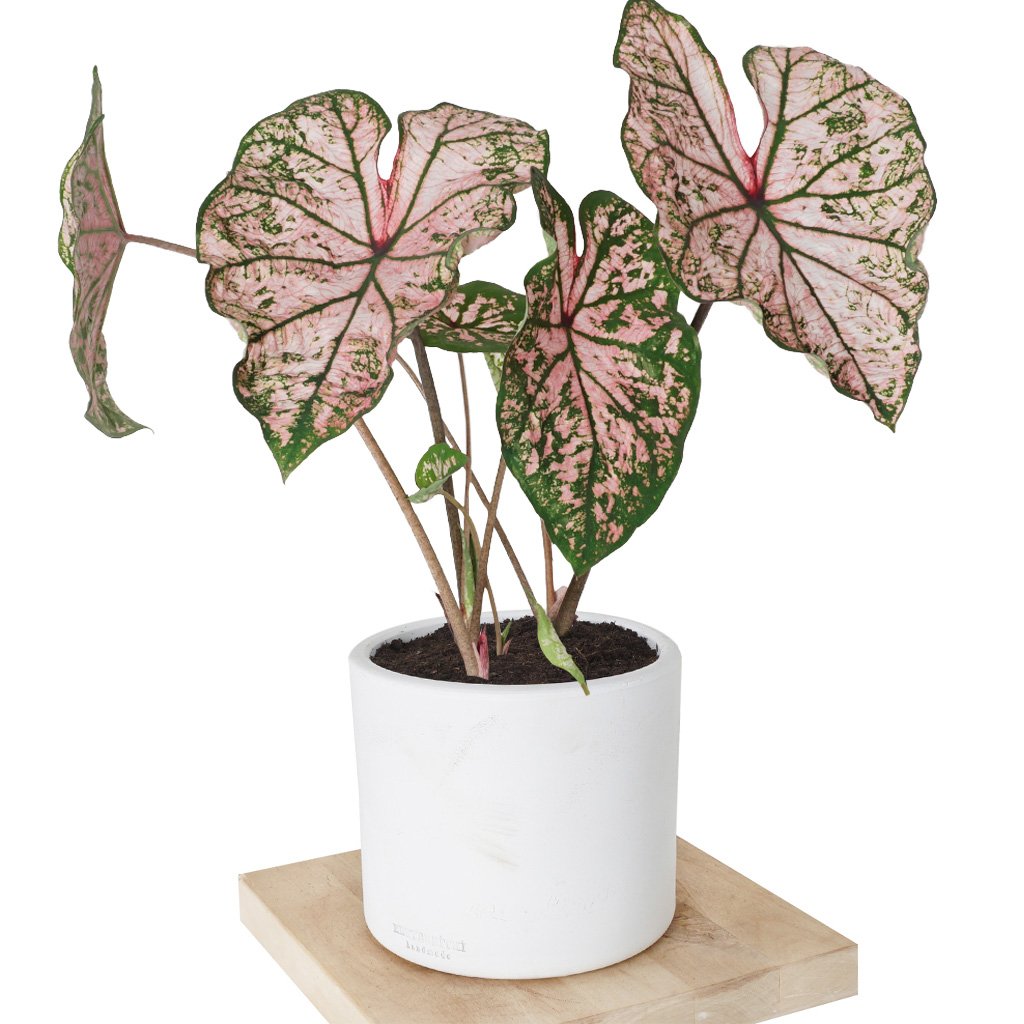10 Common Plants Toxic to Pets: How to Keep Your Furry Friends Safe
As pet owners, it's essential to be aware of the potential dangers lurking in our homes and gardens, especially when it comes to our furry companions. While many plants can add beauty to our surroundings, some can pose serious risks to our beloved pets if ingested.
We'll explore some common houseplants that can be toxic to dogs and cats, and what you can do to keep your pets safe. From the elegant peace lily to the striking snake plant, we'll delve into the hidden dangers of these seemingly harmless and cute greeneries and provide tips on creating a pet-friendly environment in your home.
Let's learn how to safeguard our pets from toxic plants together!
Sago Palm (Cycas revoluta)
Toxicity Level: Severe
The Sago Palm, with its striking appearance resembling a palm tree, is a popular choice for indoor and outdoor landscaping. However, despite its allure, this plant poses a significant threat to the pets.
What Makes It Toxic
Sago Palms contain toxins called cycasin and beta-methylamino L-alanine (BMAA) in various parts, including the seeds and foliage. These toxins can cause severe liver damage, leading to symptoms such as vomiting, diarrhea, lethargy, and in severe cases, liver failure, which can be fatal for pets.
It's crucial to keep Sago Palms out of reach. If you suspect your pet has ingested any part of the plant, seek immediate veterinary care.
Oleander (Nerium oleander)
Toxicity Level: Severe
Oleander, with its beautiful clusters of colorful flowers, is a common ornamental shrub found in gardens and landscapes. However, beneath its aesthetic appeal lies a hidden danger for pets.
What Makes It Dangerous
Every part of the Oleander plant, including its leaves, stems, flowers, and sap, contains potent toxins called cardiac glycosides. These compounds can cause severe cardiac abnormalities, including irregular heart rhythm, decreased heart rate, and even cardiac arrest in pets.
Pets that ingest Oleander may display symptoms such as drooling, nausea, vomiting, diarrhea, abdominal pain, weakness, and tremors.
Immediate veterinary attention is essential if you suspect your pet has ingested Oleander.
Azalea (Rhododendron spp.)
Toxicity Level: Moderate to Severe
Azaleas, with their vibrant blooms and lush foliage, are a common sight in gardens and landscapes, especially during the springtime. While these plants add beauty to outdoor spaces, they pose a significant threat to our furry companions.
How Risky for Pets
Azaleas contain grayanotoxins, a group of compounds that can cause poisoning in pets when ingested. These toxins primarily affect the cardiovascular system and can lead to symptoms such as gastrointestinal distress, weakness, collapse, difficulty breathing, and irregular heartbeat. Immediate veterinary attention is crucial in cases of Azalea poisoning.
Caladium(Caladiumspp.)
Toxicity Level: Moderate to Severe
Caladiums, with their vibrant foliage and heart-shaped leaves, add a splash of color to any indoor or outdoor space. However, pet owners should exercise caution as these ornamental plants can pose a threat to our furry companions.
Risk to Pets?
Caladiums contain insoluble calcium oxalate crystals, which can cause irritation and injury if ingested by pets. Both topical exposure and oral ingestion can lead to adverse reactions in dogs and cats. Pets affected by Caladium poisoning may experience symptoms such as oral irritation, excessive drooling, vomiting, diarrhea, and difficulty swallowing. In severe cases, swelling of the mouth and airway can occur, leading to respiratory distress.
The Snake Plant, known for its striking appearance and air-purifying properties, is a popular choice for indoor decoration. However, pet owners should be aware that this plant poses risks to their beloved animals.
How Serious It Is?
Snake Plants contain a toxin called saponin, which can be harmful to both cats and dogs if ingested. This compound serves as a defense mechanism for the plant but can cause adverse reactions in pets. Ingestion of Snake Plant leaves can lead to symptoms such as nausea, vomiting, and gastrointestinal upset in pets. While the toxicity level is considered mild-to-moderate, it's essential to monitor animals for any signs of distress.
Dracaena (Dracaena spp.)
Toxicity Level: Mild To Moderate
Dracaena plants, with their striking foliage and easy care requirements, are popular choices for indoor decoration. However, behind their aesthetic appeal lies a hidden danger for our beloved pets.
Threat to Pets?
Dracaena plants contain saponins, compounds that can cause toxicity in dogs and cats if ingested. Pets that have consumed Dracaena may exhibit gastrointestinal symptoms such as vomiting and diarrhea, often accompanied by signs of discomfort and lethargy. As the toxins affect the nervous system, pets may also display neurological symptoms like tremors and weakness.
Jade Plant (Crassula ovata)
Toxicity Level: Mild To Moderate
The Jade Plant admired for its resilience and ornamental appeal, conceals a hidden danger for pets. While popular in households, especially for their succulent charm, Jade Plants can pose risks to our lovely animal companions.
Harmful to Pets?
When ingested by pets, Jade Plants can lead to mild to moderate toxicity. Though not deadly serious, toxic substances in the plant can cause gastrointestinal distress in cats and dogs. Pets affected by Jade Plant toxicity may exhibit signs such as lethargy, weakness, vomiting, and in severe cases, difficulty walking or tremors. While the toxicity level is generally considered low to moderate, however, it's still advisable to consult a veterinarian.
Pothos (Epipremnum aureum)
Toxicity Level: Mild
Pothos, also known as Devil's Ivy, is a popular houseplant appreciated for its lush green foliage and easy maintenance. However, beneath its aesthetic appeal lies a hidden danger for pets, particularly dogs and cats.
How Risky for Pets?
Pothos plants contain insoluble calcium oxalate crystals, which, when chewed or ingested by pets, can lead to gastrointestinal distress. While rarely fatal, ingestion of these crystals can cause discomfort and a range of symptoms in pets. Pets affected by Pothos toxicity may display symptoms such as excessive drooling, pawing at the mouth, oral irritation, vomiting, and difficulty swallowing.
Philodendron (Philodendron spp.)
Toxicity Level:Mild
Philodendrons are popular houseplants known for their lush foliage and easy care requirements. While they add beauty to indoor spaces, pet owners should be aware that these plants can pose a risk to their furry friends.
Toxicity
Philodendrons contain calcium oxalate crystals, which can cause irritation and swelling if ingested by pets. Both dogs and cats are susceptible to Philodendron toxicity, making it essential for pet owners to exercise caution. Pets exposed to Philodendrons may exhibit symptoms such as oral irritation, swelling of the mouth, tongue, and lips, excessive drooling, vomiting, and difficulty swallowing. In severe cases, respiratory distress and loss of speech may occ
Peace Lily (Spathiphyllum spp.)
Toxicity Level:
Mild
The Peace Lily, with its elegant white blooms and glossy green leaves, adds a touch of serenity to any indoor space. However, pet owners must be aware that this seemingly peaceful plant harbors hidden dangers for their furry friends.
Threat to Pets
Peace Lilies, like many members of the Araceae family, contain calcium oxalate crystals, which are toxic to both dogs and cats. When chewed or ingested, these crystals can cause an inflammatory reaction in pets' mouths and gastrointestinal tract. Pets affected by Peace Lily poisoning may exhibit symptoms such as intense burning and irritation of the mouth, excessive drooling, vomiting, difficulty swallowing, and decreased appetite. Prompt recognition of these signs is essential for timely intervention.
Safety First
While houseplants can enhance our living spaces, it's crucial to choose pet-safe varieties and take precautions to keep toxic plants out of reach of our furry friends. By being aware of the potential dangers and taking proactive measures, we can shape a safe environment for both our plants and pets to thrive.
Do You Consider Repotting You Might Like These

























